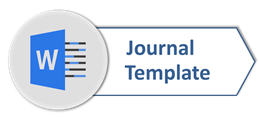Student Perceptions of a Flipped Basic English Practicum Classroom
Abstract
Flipped classroom, or, in other words, flipped learning setting, has several advantages as well as challenges. In this study setting, flipped classroom was applied to several topics covering grammar lesson prior to the practicum session. This study aimed at investigating the student perceptions of a flipped Basic English Practicum Classroom. Mixed-method research was applied to 44 students, chosen by employing the Simple Random Sampling. A survey was done to gain description on how beneficial the Flipped Classroom model employed in the practicum class, while the interview was also done to give more explanation to the questionnaire data. The data gained were then analyzed in descriptive statistics and coded. The findings showed that flipped classroom employed in this study was not beneficial based on students’ perceptions. Both findings derived from the survey and interview showed that the students preferred a teacher-led lesson for the theory class in preparation for the practicum class, although they also agreed that this model also supports their independent learning. The findings showed that flipped classrooms were found not beneficial, as perceived by the students. As a result, further research should be conducted to find out the reasons why flipped classrooms employed in this setting was not beneficial.
Keywords: flipped classrooms, student perception, teacher-led lesson
Full Text:
PDFReferences
Afzali, Z., & Izadpanah, S. 2021. The effect of the flipped classroom model on Iranian English foreign language learners: Engagement and motivation in English language grammar. Cogent Education, 8(1).
Al-Abdullatif, A. M. 2020. Investigating self-regulated learning and academic achievement in an eLearning environment: The case of K-12 flipped classroom. Cogent Education, 7(1).
Ansori, M., & Nafi’, N. N. 2018. English Teachers’ Perceived Benefits and Challenges of Flipped Classroom Implementation, 5(2).
Boevé, A. J., Meijer, R. R., Bosker, R. J., Vugteveen, J., Hoekstra, R., & Albers, C. J. 2017. Implementing the flipped classroom: An exploration of study behaviour and student performance. Higher Education, 74(6), 1015-1032.
Creswell, J. W. 2012. Educational research: Planning, conducting, and evaluating quantitative and qualitative research, (4th ed). Pearson.
Ha, A. S., O’Reilly, J., Ng, J. Y. Y., & Zhang, J. H. 2019. Evaluating the flipped classroom approach in Asian higher education: Perspectives from students and teachers. Cogent Education, 6(1).
Herreid, C. F., & Schiller, N. A. 2013. Case Studies and the Flipped Classroom. Journal of College Science Teaching, 42(5).
Ishak, T., & Kurniawan, R. 2020. Students’ Needs Satisfaction with Asynchronous Online Video Lectures in The Flipped Classroom Environment, 8(2).
Israel, G. D. 1992. Determining Sample Size. University of Florida. https://www.researchgate.net/profile/Subhash-Basu-3/post/how_could_i_determine_sample_size_for_my_study/attachment/5ebaa4924f9a520001e613b6/AS:890361492811785@1589290130539/download/samplesize1.pdf
Jaster, R. W. 2017. Student and Instructor Perceptions of a Flipped College Algebra Classroom. 29(1), 1-16.
Johnson, G. B. (2013). Student Perceptions of The Flipped Classroom. The University of British Columbia.
Johnson, R. L., & Morgan, G. B. 2016. Survey Scales: A Guide to Development, Analysis, and Reporting (First). The Guilford Press.
Kolahdouzan, M., Mahmoudieh, M., Rasti, M., Omid, A., Rostami, A., & Yamani, N. 2020. The effect of case-based teaching and flipped classroom methods in comparison with lecture method on learning and satisfaction of internship students in surgery. Journal of Education and Health Promotion, 9(1), 256.
Kvashnina, O. S., & Martynko, E. A. 2016. Analyzing the potential of flipped classroom in ESL teaching. International Journal of Emerging Technologies in Learning (IJET), 11(3), 71.
Mason, G. S., Shuman, T. R., & Cook, K. E. 2013. Comparing the effectiveness of an inverted classroom to a traditional classroom in an upper-division engineering course. IEEE Transactions on Education, 56(4), 430-435.
Mason, G., Shuman, T., & Cook, K. 2013. Inverting (flipping) classrooms: Advantages and challenges. 2013 ASEE Annual Conference & Exposition Proceedings, 23, 1-23.
Namhee Kang. 2015. The comparison between regular and flipped classrooms for EFL Korean adult learners. Multimedia-Assisted Language Learning, 18(3), 41-72.
Nguyen, T. 2017. Implementation of English flipped classrooms: Students’ perceptions and teacher’s reflection. International Journal of Research Studies in Language Learning, 7(3).
Nielsen, K. L. 2023. Why can the flipped classroom frustrate students? Experiences from an engineering mathematics course. Education Sciences, 13(4), 396.
Novak, J., Kensington-Miller, B., & Evans, T. 2017. Flip or flop? Students’ perspectives of a flipped lecture in mathematics. International Journal of Mathematical Education in Science and Technology, 48(5), 647-658.
Roehling, P. V. 2018. Flipping the College Classroom. Springer International Publishing.
Sari, F. M., & Wahyudin, A. Y. 2019. Undergraduate students’ perceptions toward blended learning through Instagram in English for business class. International Journal of Language Education, 64-73.
Sharp, J. H. 2016. The Flipped C# Programming Classroom: What Students Had to Say. Information Systems.
Soliman, N. A. 2016. Teaching English for academic purposes via the flipped learning approach. Procedia: Social and Behavioral Sciences, 232, 122-129.
DOI: https://doi.org/10.33365/ts.v21i2.3130
Refbacks
- There are currently no refbacks.
Copyright (c) 2023 Ika Sulis Setianingsih, Risa Arroyyani

This work is licensed under a Creative Commons Attribution-ShareAlike 4.0 International License.
Teknosastik: Jurnal Bahasa dan Sastra
Publisher: Universitas Teknokrat Indonesia
Address: Zainal Abidin Pagaralam Street 9-11, Bandar Lampung, Indonesia
Website: https://ejurnal.teknokrat.ac.id/index.php/teknosastik/index

Creative Commons Attribution-ShareAlike 4.0 International License






